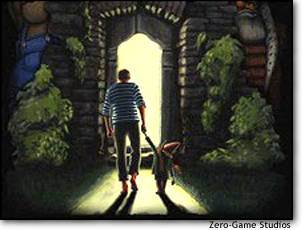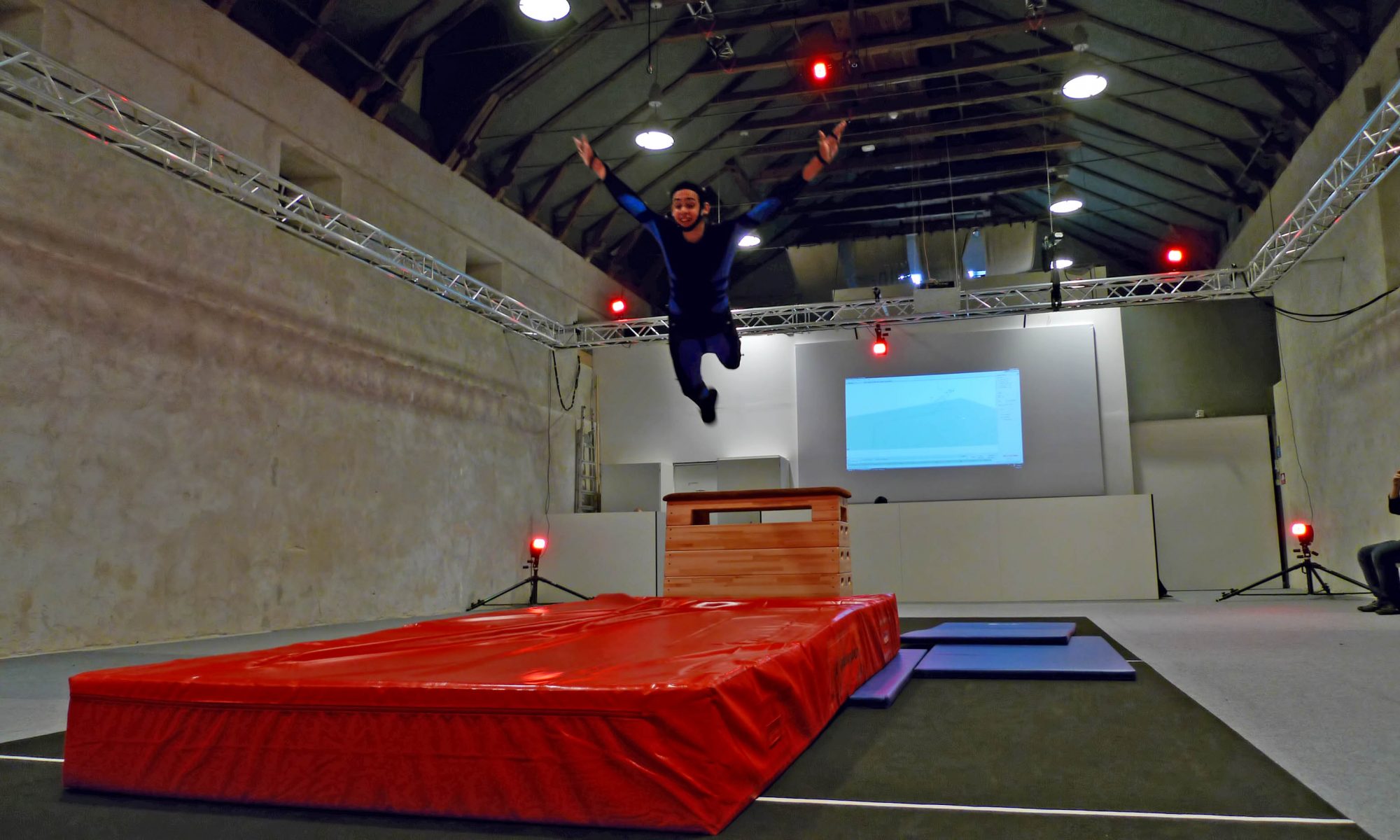(this post has been back-dated and was published on 2018-02-18)
This news article about Zero-Game Studio and their portable game Visby Under is only tangentially related to the Department of Game Design. Zero-Game Studio ran game related research in Visby in the early 2000s, and their staff would frequently hold lectures and workshops in our courses. Both Miriam Eladhari and Craig Lindley, whom are interviewed in this piece, went on to work full time at the university for several years when Zero-Game Studio concluded their work.
The game in the article was a research project involving the production of a portable and location-based game. This was, of course, before smartphones and commodification of GPS radios so their primary platform were Palm computers and (later) Nokia N-Gage, and Bluetooth beacons. The project was realized by Namni Group for Interactive Institute’s Zero-Game Studio, with support from Svenska Spel.
The original article by Patric Hadenius is reproduced below.
===
Oct. 15, 2003 — The beep coming from your PDA is not a reminder for a meeting. It’s a trull trying to communicate. Shouting, it looks at you from the screen. The only thing to do is to scribble some runes to make it quiet. Then run to the next holy place.
This is a perfectly real scenario, and has been since the release of The Visby Game — an adventure computer game set not in the usual fantasy world but in the town of Visby, Sweden. The trull is a character in the game, and together you visit mystical places both in the physical world and the game world.

The choice of Visby for the game setting is no coincidence. This small, medieval town is the home of Zero-Game Studio, an applied research lab specializing in games. A dozen leading computer game researchers from all over the world have settled at this two-year-old lab to investigate what a game really is — and what it could be. Zero-Game is part of a company called the Interactive Institute, which is owned by a Swedish research foundation that is itself controlled and financed by the Swedish government.
The Visby Game is one of Zero-Game Studio’s first projects — and one of the first games in the world to take advantage of mobile technology for multi-user gaming. Apart from investigating what can be done with portable gaming, it is also being used to gather knowledge about how location-based games can augment the tourism experience. Being both portable and played by several participants at the same time, The Visby Game is hooked on the two trends right now.
“Mobile games and massively multiplayer games are the latest significant changes in the basic model of what a game is,” says Craig Lindley, research manager at Zero-Game Studio and visiting professor at the Department of Engineering, Art and New Media at Sweden’s University of Gotland. Lindley’s research background is in the areas of knowledge base systems, artificial intelligence and autonomous agents, but a chance to work in a group specializing in the new field of games research brought him to Visby, situated on an island in the middle of the Baltic Sea.
From the other side of the Baltic, in Finland, comes further evidence that portable and multi-user gaming are hot: Telecom company Nokia’s new N-Gage device is a combination of a high-end mobile phone and a game deck with fast graphics and color screen. N-Gage also incorporates Bluetooth wireless technology to make possible multiplayer games among people in the same vicinity as one another. Game Boy needs an adapter to get this kind of wireless gaming. Play Station Portable, Sony’s long awaited answer to Nintendo’s Game Boy, expected to debut next year, is said to use Wi-Fi.

The early reviews have called N-Gage clumsy and expensive, dismissing it as just another mobile phone with some game-play capabilities. But the publishers of computer games seem thrilled. They believe they are seeing a chance to expand through new channels and to new consumers. This fall should bring the release of several high-quality games for the N-Gage, including Tomb Raider, Tony Hawk’s Pro Skater and Sega Rally Championship.
Lindley thinks playing on mobile devices has not come near its potential: “There’s a new and emerging game area where mobility and location have particular kinds of impact on the kinds of game playing that are possible, ” he says. “This is something that is yet to be explored in depth.”
Exploiting the medium
The second trend that Zero-Game Studio is pursuing is that of massively multiplayer games, with as many as tens of thousands of players online at once. This form is so new that the styles of game play that uniquely exploit the medium have just started to emerge. There are now just above 50 massively multiplayer online games available, but more than 100 are in development.
Mirjam Eladhari, a game programmer who heads technology development at Zero-Game Studio, recently surveyed the upcoming crop of massively multiplayer online games. Before making the survey, Eladhari had a few preconceptions about the results. Almost all current games are played in either a sci-fi or a fantasy world, she notes, adding: “I thought that there would be an increasing number of games that combine different game play genres, such as real-time strategy or first-person shooter combined with role-playing. I also thought there would be a change in the choice of fictional themes for game worlds. This all proved to be wrong.”
Lindley would like to see the industry put more money into development of new concepts. Generally, he concedes, it’s easier to convince investors to follow established game forms with predictable markets. But, he says: “In the longer term, it will be necessary for the industry to push these boundaries to keep products interesting.”
Zero-Game Studio has made several attempts to author those new games. In addition to The Visby Game, the lab has created Ouroboros — a multiplayer online game populated with beautiful, mythical characters inspired by local tradition. Lindley calls Ouroboros a persistent virtual world for game research. The research is as basic as can be: it’s about what a game really is — and what it is not. Because if it is just role-playing online, Lindley insists, then it’s not a game.
The hunt is for a game that has a narrative, without losing too much in action or freedom for the player. Usually, games with a story only display the narrative as film clips, and then insert bits of ordinary action shoot-’em-up game between the scenes. “In the end,” says Lindley, “I want to find a game where I care about the life that’s in it.”
